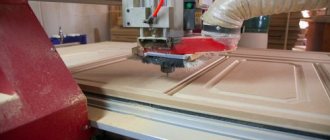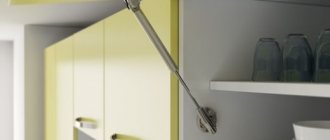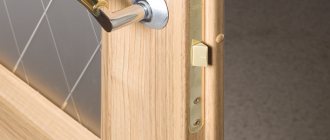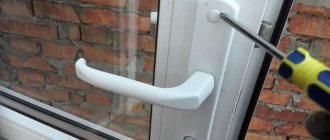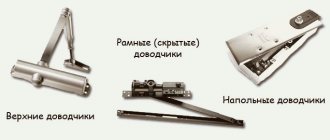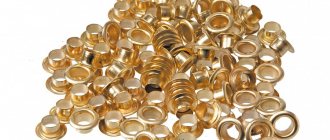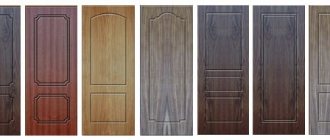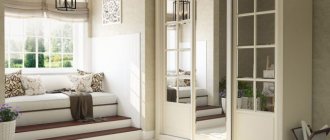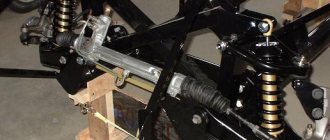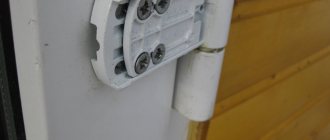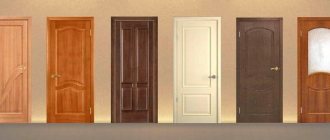What is a spring mechanism
The simplest mechanism is a product that is attached at one end to the door frame and at the other end to the door leaf. Tension adjustment occurs by moving either end. Door springs are inexpensive, easy to design and install, and therefore are in constant demand.
Over time, closers appeared. They do not have tension adjustment, so they always close the door with the same force. Such devices are well suited for industrial and utility premises.
How to adjust a door closer
Silent, smooth opening and closing of doors is ensured by service mechanisms. Installed door closers affect the speed and fix the blades in the open position. Models with wind brakes are used at building entrances. The review contains recommendations on how to adjust the door closer and improve the condition and operation of the equipment.
Manufacturers produce two types of equipment:
- cam slide;
- gear lever.
Cam models are intended for lightweight structures only. The “cam” moves along the rollers and puts pressure on the working spring. The mechanism ensures smooth closing.
The most common option is gear lever mechanisms. Energy is transferred to the spring through gears. Such door closers are suitable for heavy doors with combination locks.
Depending on the placement there are:
- top (overhead);
- floor;
- hidden (frame) closers.
The upper models are installed above the sashes. Entrance and facade groups are equipped with models adapted for use in cold or hot climates. Inexpensive devices are equipped with a sliding rod or gear mechanism.
Floor-standing options are attached to the bottom of the door blocks. This is the best option for office, banking premises, shopping and entertainment complexes. The devices are almost invisible to visitors.
Floor structures are often installed under glass, intercom doors that open in both directions. Standard regulators are designed for sashes weighing up to 120 kg. An internal shock absorber prevents the door leaf from hitting the door frame. The shock-absorbing mechanism reduces loads and extends service life.
Hidden structures are placed inside the frame or in the floor. The minimum thickness of the door leaf for installation is 40 mm. Independent adjustment of the mechanisms is almost impossible due to difficult access. Such equipment is intended for premises with increased requirements for interior design.
The devices consist of a housing, a spring, a piston, adjusting screws, gears, bearings, rubber seals, and fasteners. Most models have a metal body. Decorative plastic trim is more often used on models intended for interior doors.
The operating temperature range is -40 – +50 degrees. Fire-resistant structures designed for fire-fighting equipment and bank vaults can withstand fire exposure up to +300 degrees.
The optimal model is selected according to the parameters of the door block. The weight of the sash and the width of the leaf are taken into account. Manufacturers produce various series for indoor and outdoor installation, sliding structures. The housings of outdoor models are protected from vandalism and the ingress of dust and dirt.
Based on maximum load, equipment is divided into several classes - from EN1 to EN7. The class is determined by the weight of the closer, the door leaf, and the width of the opening. EN1 devices are designed for a maximum weight of 20 kg, opening width up to 75 cm, EN7 - for 160 kg and 160 cm.
When choosing, the orientation is taken into account - left-handed or right-handed. The working life is designed for a certain number of opening-closing cycles. The color and design of the selected model must match the interior of the room.
The operating principle of the mechanisms can be:
- hydraulic;
- pneumatic;
- electric.
When the doors open, the spring is compressed and accumulates energy to return the door leaf to its original position. The pressure is exerted by the piston of the traction device. Racks and gears move the piston. The height of the gears is adjusted with screws.
During movement, the piston opens and closes holes for oil overflow. Oil flows through the valve system into the free part of the housing. The straightening spring provides a smooth return stroke. The spring transfers energy to the rod or rack. Thanks to the lever system, the structure returns to its original position.
The rod moves in the oil, pushing the liquid through the jets. The viscous environment prevents movement. The spring continues to act on the rod and the door begins to close. How to adjust the door closer? To change the speed of movement, the cross-section of the jets passing oil is optimized.
When tightening the screw with the oil seal, the gaps in the technological holes are blocked. The volume changes more slowly, the angular velocity of the valve decreases. At the end of the cylinder, the piston reaches a system of holes corresponding to the aftershock (finishing).
In most cases, setting up and adjusting the closer can be done with your own hands. The initial adjustment of the mechanism is performed immediately after installation. Preventative inspections and elimination of minor faults are carried out 2-3 times a year.
How to adjust the door closer? The condition of the lubricating fluid is affected by the state of the environment. Structural parts are subject to constant thermal expansion and contraction. In winter, the oil thickens and the door speed slows down. In summer, the structure heats up and the doors close very quickly. Therefore, the main procedures are carried out during the changing seasons.
Adjustments are made during scheduled maintenance. During the setup process, the optimal parameters are established. With constant temperature fluctuations, the closers are adjusted more often - once every three to four months.
Significant temperature fluctuations destroy the mechanism, causing breakdowns and damage. At the first sign of malfunction, the device is checked. Oil leaks are eliminated and worn parts are replaced.
Important! In case of complex malfunctions, knowing how the closer is adjusted will not help solve the problem. In such cases, the device is returned for repair or replaced with a new one.
The frequency of scheduled maintenance is influenced by the service life of the equipment (old equipment breaks down more often), frequency of use, and the average value of constant loads.
When opening the door, the mechanical energy of movement is transformed by the built-in drive. The reverse process consists of two phases:
Closing moves the door from any initial state to the “15 degree angle with the wall” position. The final finishing phase (finishing) ensures smooth movement of the blade in the cycle “from 15 to 0 degrees”.
The adjustment helps the door block close slowly and reduce the force of the slam.
The closers have two screws that regulate each phase. The screw marked “1” corresponds to closing, and the one marked “2” corresponds to finishing (latching). Some models are equipped with a third screw that regulates the opening and closing force.
The location of the controls and recommendations for handling are usually given in the operating instructions. Typically the screws are located under a protective cover on the front of the case or on the side.
The speed of movement of the sash is changed by tightening the screws. A screwdriver is required for adjustment. Before starting work, the canvas is opened completely and fixed.
How to loosen a door closer? Turning the screw counterclockwise slows down the blade. The clap should be slow so that the canvas does not break against the box.
Door stop
Another useful device that has different names is a door stop, stopper or door stop. Its purpose is to protect the wall and furniture from being hit by an opening door. But sometimes it is necessary to hold the door open, and mobile stops can help here. This stopper is a thin plate with anti-slip fasteners attached to the ends. When used, the plate is slipped under the canvas.
When door springs with high tension are used, the mobile stopper may not be able to cope with the load and may not hold the door leaf. Therefore, in cases where a lot of force is required, it is best to use a closer with the ability to fix at a given point as a door return device and at the same time a closing limiter.
Portal about construction
01/18/2019 admin Comments No comments
To protect the door from premature failure, closers are often used. These devices are designed to smoothly and accurately slam the door leaf. A specific model is selected based on many factors:
- temperature changes;
- expected load;
- the weight of the canvas itself;
- required level of reliability.
Often such mechanisms cost a lot, and if for external doors this is justified by the reliable service of purchased devices, then for internal doors or a summer house it is more economical to make a homemade closer.
Installation
Installation is a simple process and installation does not take much time. It is necessary to screw the hooks onto the door frame and the door leaf with self-tapping screws. Then put one loop on any of the hooks. The door spring should be tensioned on the second hook when the door is closed.
Another installation nuance is setting the spring tension. If its force is too weak, it is necessary to remove the loop and move the hook slightly to the side, thereby increasing the overall force of the device. This action allows you to adjust the operation of the doors in accordance with the power of the mechanism and the weight of the leaf.
How to install a spring on a door
Automatic closing of the door leaf is a very useful function, especially when it comes to public, office and other facilities with a large number of visitors. This simplifies the operation of the doors and prevents premature damage to the locks due to too much manual slamming.
What is a door spring and what types are there?
There are several options for solving the problem of automatically closing doors. The simplest of these is to install a door spring. This is a very cheap device, easy to install and replace. It is a regular steel spring, which is attached to the door at one end and to the wall at the other.
When the leaf is opened, the spring is stretched, which ensures its return to its original position. The closing force depends on the rigidity, length, number of turns, diameter and other characteristics. Springs are the most reliable and durable type of closing mechanism.
It is not afraid of temperature changes, high humidity, mechanical stress and vibration.
In addition to the classic spring mechanism, there are several more modern solutions that provide automatic return of door structures:
1. Door closers. These devices are equipped with a spring mechanism, which is enclosed in a housing. The design also includes an oil or other type of shock absorber designed for smooth movement of the door leaf. It prevents the loud slamming and sudden closing of doors that is typical of a conventional spring. Some models of door closers allow you to adjust the maximum opening angle and closing speed of the door, and have the function of fixing the door leaf in the open position.
Depending on the type of spring used, devices are divided into two types: gear-driven and sliding-rod. The first type has a simpler and more compact design. The second option is more cumbersome, but its level of reliability and durability is higher than that of a gear drive.
Among the main disadvantages of door closers are the rather high cost and the need to strictly adhere to operating rules (for example, you cannot open the door too sharply or apply force when automatically closing the door).
2. Spring hinges for the door. Very compact and convenient devices. They are ordinary door hinges equipped with a small but quite powerful internal spring. Products come in both overhead and pin, corner, and hidden. A special type of spring hinges are double-sided, which are also sometimes called bar hinges. They ensure that the door swings open in both directions and returns to the neutral position. Such hinges can be installed on entrance doors in cafes, shops, public institutions, etc.
Main advantages
Springs, like other automatic door closing devices, provide:
- Convenience of using the door, even with busy hands.
- Preservation of heat in the room in winter and cool air in summer.
- No need to close doors manually.
How to install a spring on a door?
Let's take a closer look at how to properly install various types of automatic locking devices on a door.
Regular door spring
The simplest option, installation on the door usually does not cause any difficulties. There are special eyes at the ends of the door spring. Before you put the spring on the door, you need to screw two hooks - one on the door and the other on the wall or door frame. The distance between them when the sash is closed should be slightly greater than the length of the spring. This will provide the necessary clamping force on the blade. After this, it is enough to hook the eyes onto the hooks.
Important! The difficulty in this process is the correct choice of spring. Its rigidity and length must correspond to the weight and dimensions of the door. Otherwise, the door may close too quickly or not close at all. Therefore, before purchasing and installing a mechanism, it is advisable to make at least an approximate calculation of the characteristics or seek help from specialists who have extensive experience and know how to install a spring on a door for comfortable, long-term and trouble-free operation.
Door closer
Installation of the door closer is carried out in the following sequence:
1. Choose a suitable model. It must match the parameters of the door. For example, for a leaf weighing 20 kg and a width of 800 mm, you can use an EN1 type closer, and for a 40-kg leaf with a width of 900 mm, a model of type EN2 is suitable. For heavy armored doors, it is advisable to use two devices at once - this will distribute the load more evenly.
2. Determine the installation location on the door. In this case, it is necessary to take into account the direction of opening the doors and the design of the closer itself.
3. We attach the installation diagram that comes with the device to the door leaf and frame, and mark the holes on the door for fasteners.
4. We make holes with a drill, the diameter of which should correspond to the size of the fastener. In the case of metal doors, so-called booms should be used to prevent deformation of the structure at the installation site.
5. Using screws or self-tapping screws, fasten the body of the closer to the door and attach the mating part to it.
6. Adjust the lever so that it is at a right angle to the blade.
7. We adjust the force and speed of closing the door using special adjusting screws.
8. Set up additional functions, if any (for example, braking for an open door).
Important! Installing a door closer is a complex task that cannot be solved by simply reading the instructions or watching a video describing the installation process. It requires a lot of experience and good tools. Even small mistakes when installing the closer can lead to its rapid failure. In this regard, installation work should be entrusted to professionals.
Spring hinges for doors
Installing them on a door is not much different from installing conventional hinges, but there is an important point - the sequence of actions:
1. We make markings on the end of the door and on the door frame for mounting holes.
2. Remove the stopper from both cards, which will allow you to release the spring. To do this, insert the pin into the sleeve and turn it counterclockwise.
Homemade devices
You can use improvised materials as homemade devices. In most cases, these are various rubber products - ranging from pears, tennis balls and ending with pieces of car inner tubes. The appearance of such a device is unpresentable, but it will cope with its functions. It can be used for gates in country houses or for gates of outbuildings.
A more reliable and visually attractive option would be to use thin steel plates. To install the plate, it is enough to drill a hole at its ends and secure it, preferably with long self-tapping screws, so that it does not tear off when tensioned.
Types of loops
Door hinges first appeared in human life a long time ago. The first of them are made from genuine animal leather. Some intertwined with each other using tree branches. Later they made special metal plates. Today there are a large number of different parts made from different materials. Each of them performs its own functions. They are comfortable and have decorative functions. Decorate the structure and interior. Loops are distinguished by several criteria:
- manufacturing material - brass, steel, bronze, etc.;
- installation method: cutting-in, by overlaying and screwing in;
- Features of the design of mechanisms: screw-in, mortise, overhead, angular, double-sided.
Door one-way spring hinges
Invoices are a classification of an element that is most common and popular. This is due to simple fasteners and an affordable price. Attaching them is not difficult, since it is enough to fix them with self-tapping screws to the surface of the door frame and leaf.
Mortise products are structures that are no different in manufacturing from overhead types. They differ in the installation method. Canopies of this type are cut directly into the surface of the door. In order to make the cut, use a chisel.
Hidden and screwed in at the same time. This is not a very common option for door hinges. This can be explained by the fact that they have a complicated installation, especially for beginners. They are placed inside the door frame and leaf. Hidden door hinges for opening in both directions cannot be removed or sawed after installation. To do this, complete dismantling is performed.
Corner products. From the usual loops, which differ in that the design of traditional cards does not contain. In their place are corners and hinges that are attached to each other. A positive characteristic of such elements is the possibility of equipping doors with a rebate.
Double-sided hinges are parts that are similar to card hinges, but have differences. Spring hinges have special springs inside.
Double-sided spring hinges
